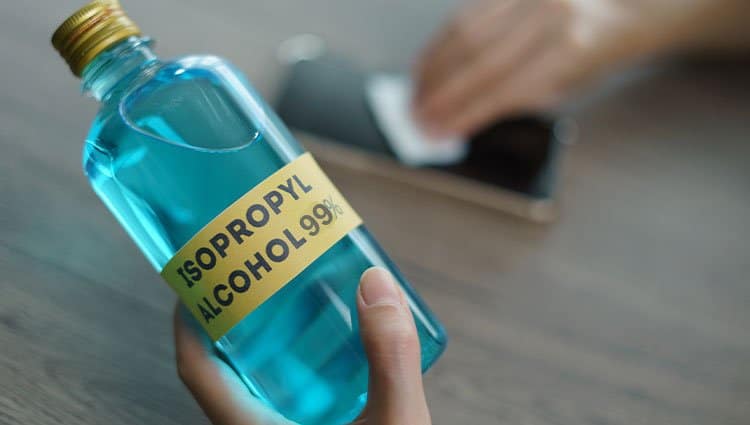Dust and debris can impair connections to the motherboard and even keep your computer from working, mainly because they can increase the heat on the board. Everyone should include a routine cleaning of their motherboard in their list of chores — along with the rest of the computer components. However, some people will need to go further and deep clean their motherboard for it to operate correctly.
How To Clean A Motherboard
If you haven’t cleaned a motherboard before, approach the operation with a lot of caution. Motherboards are delicate, and the wrong move could damage the equipment and make it unusable in the future. There are two main ways to clean a motherboard: routine cleaning and deep cleaning. Routine cleaning is something you should include as part of your regular computer maintenance schedule. It doesn’t require much special equipment, and you don’t have to remove your motherboard from your computer to do it. This is the only kind of motherboard cleaning that most people need to do. Deep cleaning requires alcohol and a lot of caution. This type of cleaning is necessary when the motherboard has been in a filthy environment, or something was spilled on it. If you do it improperly, you can brick the motherboard. For reference, I’ve only had to deep clean a motherboard once — when we bought a possibly damaged motherboard for a test build, and there was visible dirt on it. There are three computers used daily in my household, and we’ve never had to deep clean the motherboards we purchased new for them.
Routine Cleaning
To perform a routine cleaning for your motherboard, use compressed air and a very soft brush. Before starting, shut down your computer, flip the power supply switch, and unplug it from the wall. You want the computer to be in an area that’s easy to clean since dust will blow out of it. When you clean your motherboard, it’s a good time to do other computer maintenance operations. You can remove the case fans, wash them, and dry them. You can check your wiring for loose connections or clean up any overlapping cables. Cleaning your motherboard this way, at least every quarter, is an excellent way to keep it working. Removing dust will keep it from overheating, too, which can help you get better performance. Keep an eye on your motherboard and the inside of your case to determine whether you need to clean it more often. Some computers gather dust more quickly than others, depending on where they’re placed in a room.
Deep Cleaning
Deep cleaning a motherboard should be saved for motherboards that are in dire straits. We purchased one that had been in a flooded home and wasn’t guaranteed to work. It was caked with visible dirt. Once we’d deep cleaned it extensively, it worked again. However, such results can’t be guaranteed even with a meticulous and thorough deep cleaning. Before you start, make sure to get:
Lint-free cotton pads99 percent isopropyl alcoholA metal tub larger than the size of your motherboardA brush with nylon bristlesA lint-free drying towel
You must remove the motherboard from a computer before attempting to deep clean it. You shouldn’t have anything else plugged into it either. Make sure you are only cleaning the motherboard, not the CPU, cables, or any other connected devices.
Small Areas Of Dirt
If only a small area of the motherboard is dirty, try this.
Extremely Dirty Motherboard
If the entire motherboard is a mess, try this:
Warnings Before You Clean A Motherboard
Make sure to test your motherboard before you do a deep cleaning. There may not be a need for it if it’s working properly and there’s no visible debris. Always use 99 percent pure isopropyl alcohol. The purer it is, the better it is for your motherboard. Under no circumstances attempt to clean it with any other liquid. While it can be challenging to find 99 percent, lower purity levels won’t work as well and have a higher chance of causing damage. The higher the purity, the less water is in the mix. If your motherboard is still under any kind of warranty, it’s better to contact the warranty company before attempting to apply isopropyl alcohol to your motherboard. They might offer free professional cleaning. At the least, they can let you know whether doing this will void the warranty. Wetting your motherboard can cause it to stop working, even when using isopropyl alcohol. The deep cleaning method should only be done on extremely dirty motherboards that won’t work otherwise. Wear gloves and goggles when using large amounts of isopropyl alcohol. Make sure you’re working in a ventilated area.
Related Questions
Is It Okay To Wash A Motherboard?
People have successfully washed motherboards, and sometimes they’re so messy that it’s the only way to make them function properly. However, drying time is critical. If any liquids other than 99 percent pure isopropyl alcohol touch your board, wait at least a week before plugging the motherboard back in.
Can I Wash A Motherboard With Soap And Water?
While some people will use distilled water to clean their unplugged motherboard, under no circumstances should you ever use soap. People have even put motherboards in the dishwasher — without soap — and still had their board function afterward. However, using isopropyl alcohol is a better choice than water.
Can You Fix A Corroded Motherboard?
A motherboard with extreme corrosion can still be saved in some cases. This is where deep-cleaning with isopropyl alcohol comes in handy.
Can You Use 50 Percent Isopropyl Alcohol To Clean A Motherboard?
You shouldn’t. Sticking to 99 percent is your best bet. However, if you ever get a lower purity isopropyl alcohol on your motherboard, make sure to let it dry longer than you would with 99 percent pure isopropyl. The more considerable amount of water in the mix will damage your motherboard if it isn’t completely dry before you plug it back in.








